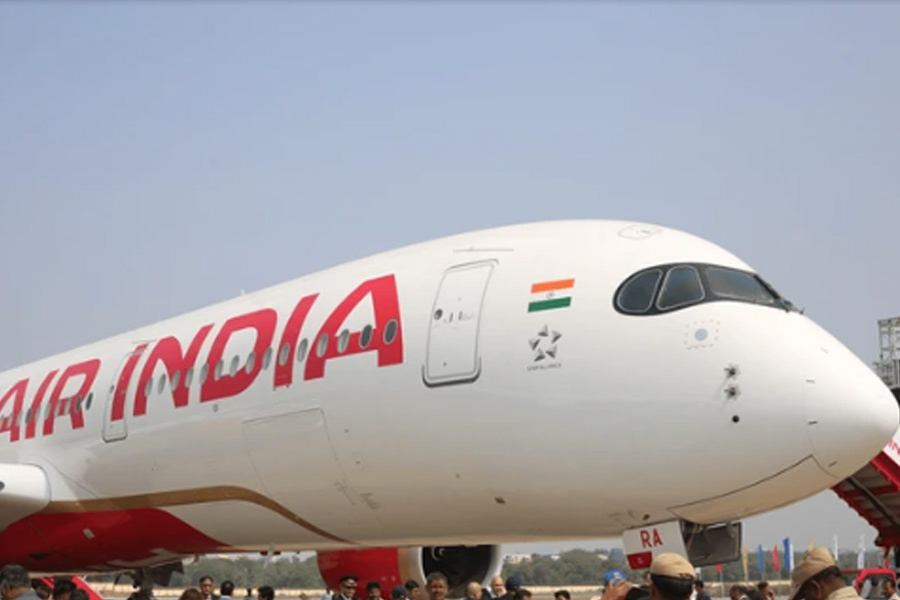New Delhi, Nov. 30: A decision by Union minister Smriti Irani has hung a question mark over the future status of the 20 proposed or new Indian Institutes of Information Technology, including one at Kalyani in Bengal.
Under the UPA government’s plans, these were to be set up under the public-private-partnership (PPP) mode, with the private partner gaining complete management control after paying 15 per cent of the establishment cost.
Accordingly, the UPA government approved the sites and private partners — picked by the host state governments — for 15 such institutes and signed MoUs for 11. Seven have already started classes. (See below)
However, a revised IIIT bill introduced by Irani — after the UPA’s bill had gone to a standing committee — has dropped the PPP provision. Introduced on August 12, the revised bill was passed in the Lok Sabha on Wednesday and comes up before the Rajya Sabha this week.
None of the 20 proposed institutes — many of which have already got off the ground in the PPP mode — figure in the revised bill, which just mentions the four existing and centrally run IIITs. (They didn’t figure in the original bill, either, but the PPP clause there left room for them).
This has made the future status of the new and proposed IIITs uncertain. Government sources tentatively suggested several possibilities.
One option is to reduce the role of the private partners in these institutes to make them eligible for IIIT status under the new bill in future.
The alternatives include retaining the PPP mode while affiliating the 20 new institutes to the four IIITs or granting them deemed university status, both of which would amount to a downgrade.
Sources involved in drafting the revised bill told The Telegraph the axe on the PPP provision came at the instance of Irani, the Union human resource development minister.
Irani took her decision after the standing committee of Parliament that had examined the original bill objected to the industry partners being allowed to run the institutes after providing just 15 per cent of the capital expenditure.
Under the UPA bill, introduced in March last year, the Centre, state and industry partners were to share the funding for the new institutes — each of which was to cost Rs 128 crore to set up — in a 50:35:15 ratio. The private partner was to manage the institute by raising funds from students and projects.
In a written answer to the Rajya Sabha on July 21, Irani had listed the 11 new IIITs for which her ministry had (during UPA rule) signed memoranda of understanding with the host state governments and industry partners.
One of these institutes came up at Kalyani in partnership with Coal India Limited, JSW Steel Limited and Rolta India Limited. It began operating out of a temporary campus this year, teaching a BTech course with support from the Indian Institute of Engineering Science and Technology, Shibpur.
Former human resource development minister M.M. Pallam Raju, who had introduced the original bill, said he wouldn’t “comment on the wisdom of the (current) government” but his disagreement was apparent.
“The idea behind the PPP provision was that private participation would bring an entrepreneurial approach to the institutes. I don’t know why it was dropped,” Raju said.
“Government is a continuous process: there should be some sort of consistency in policy.”
The supporters of Irani’s move included M.N. Buch, former chairperson of IIIT Gwalior — one of the older, government-run institutes along with those at Allahabad, Jabalpur and Kancheepuram.
“It isn’t logical that a private company would manage the institute by sharing just 15 per cent of the cost,” he said.
The dropping of the PPP provision could further delay the establishment of the IIITs that are yet to be approved.
Jharkhand information technology secretary N.N. Sinha said the state had identified a site near Kanke in Ranchi and informed the Centre.
“We haven’t got any communication. We are clueless what the (Union) ministry is doing,” he said.
Under the new bill, the four existing institutes will get “institution of national importance” tag and statutory status, so they can grant degrees and create and fill posts by themselves.
An IIIT Council is to be set up on the lines of the IIT Council for the Indian Institutes of Technology. Headed by the Union human resource development minister, it will have industry representatives and eminent citizens as members and will give advice on matters such as recruitment norms and fees.
Sources said the issue of the 20 new IIITs might be referred to the IIIT Council once it is set up.
UNCERTAIN FUTURE
- States where the 20 new IIITs were proposed and the current status
PROPOSED
- Andhra Pradesh, Assam, Bengal, Bihar, Chhattisgarh, Gujarat, Haryana, Himachal Pradesh, Jharkhand, Karnataka, Kerala, Madhya Pradesh, Maharashtra, Manipur, Odisha, Punjab, Rajasthan, Tamil Nadu, Tripura, Uttar Pradesh
Approved
- All except Bihar, Chhattisgarh, Jharkhand, Odisha, Punjab
MoU signed
- Kalyani (Bengal), Chittoor (Andhra), Kota (Rajasthan), Guwahati (Assam), Vadodara (Gujarat), Tiruchirapalli (Tamil Nadu), Bodhjungnagar (Tripura), Kottayam (Kerala), Lucknow (Uttar Pradesh), Una (Himachal), Senapati (Manipur)
Classes started
- Kalyani, Una, Kota, Chittoor, Guwahati and Vadodara (undergraduate) and Tiruchirapalli (postgraduate)










